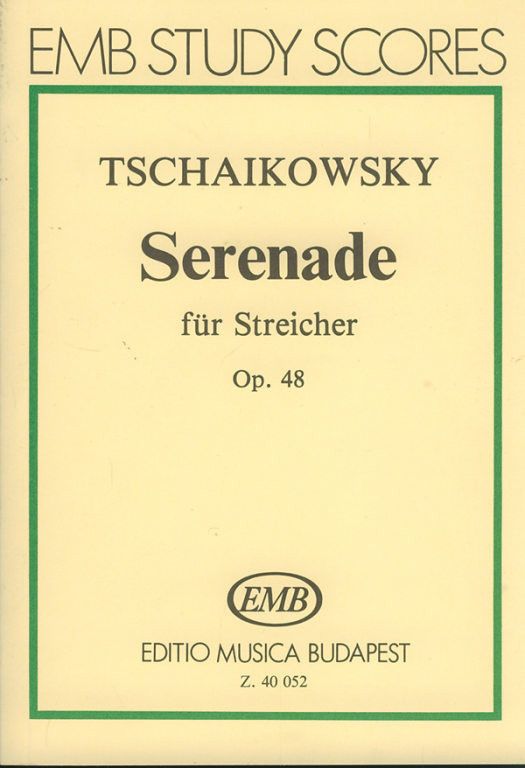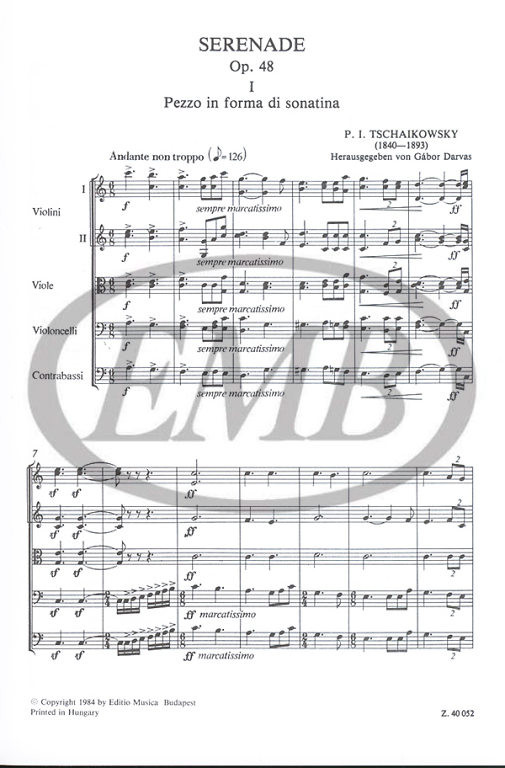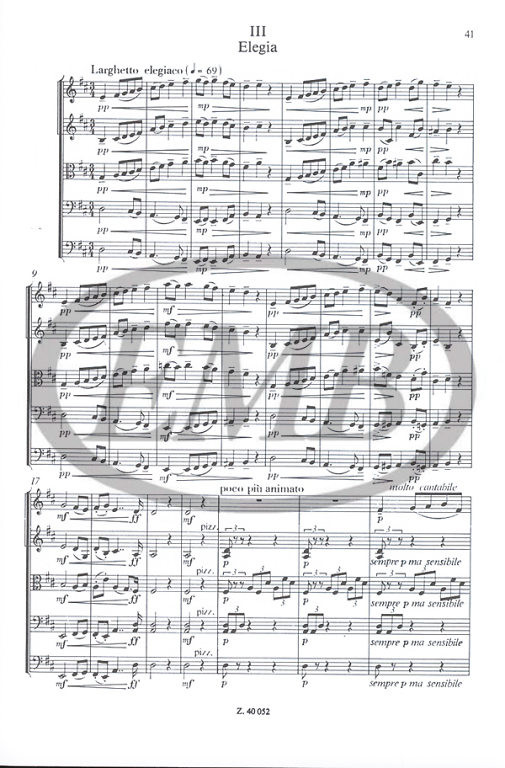Description
Tchaikovsky, Pyotr Ilyich: Serenade for Strings / pocket score / Edited by Darvas Gábor / Editio Musica Budapest Zeneműkiadó / 1984 / Szerkesztette Darvas Gábor
Paperback
Made in Hungary
Setting: String Orchestra
Series: EMB Study Scores (pocket scores)
Period: Romantic
Length: 72 pages
Format: A/5 (14,2x20)
Published: 1984
Publisher: Editio Musica Budapest Zeneműkiadó
Item number: 40052
ISMN: 9790080400524 / 979-0080400524
Hangszer/letét: Vonószenekar
Sorozat: EMB Study Scores (kispartitúrák)
Korszak: Romantikus
Terjedelem: 72 oldal
Formátum: A/5 (14,2x20)
Első megjelenés: 1984
Kiadó: Editio Musica Budapest Zeneműkiadó
Katalógusszám: 40052
The four-movement work written in 1880 and first performed in Moscow in 1882 is dedicated to Konstantin Albert, Tchaikovsky's fellow professor at the Conservatory of Moscow. By virtue of the varied nature and manifold elaboration of the music material as well as its numerous original solutions the Serenade for strings belongs to Tchaikovsky's most remarkable and - in spite of its title - profoundest compositions. The hidden relatedness of themes in the first and last movements, recoilings and melancholic darkenings interrupting the dance rhythm of the Valse (that have no more to do with light music than Chopin's or Brahms' waltzes) and the grave, slowly resolving then returning dissonances of the Elegy are all of this kind, and have contributed to making the Serenade in C major the most lasting work for string orchestra of the 19th century.
A négytételes alkotás 1880-ban készült, bemutatására 1882-ben került sor Moszkvában. Ajánlása Konstantin Albrecht-nek szólt, aki Csajkovszkij tanártársa volt a moszkvai Konzervatóriumban. A Vonós-szerenád Csajkovszkij legigényesebb és - címe ellenére - legelmélyültebb szerzeményei közé tartozik zenei anyagának választékossága, sokrétű kidolgozottsága, valamint számos eredeti megoldása folytán. Ilyenek például az első és utolsó tétel burkolt témarokonsága, a Valse táncritmusát meg-megszakító megtorpanások és melankólikus elsötétülések (melyeknek nincs több közük a szórakoztató zenéhez, mint Chopin vagy Brahms keringőinek) , valamint az Elégia súlyos, lassan oldódó, majd visszatérő disszonanciái. Mindez közrejátszott abban, hogy a C-dúr szerenád a 19. század legidőtállóbb vonószenekari művének bizonyult.


























